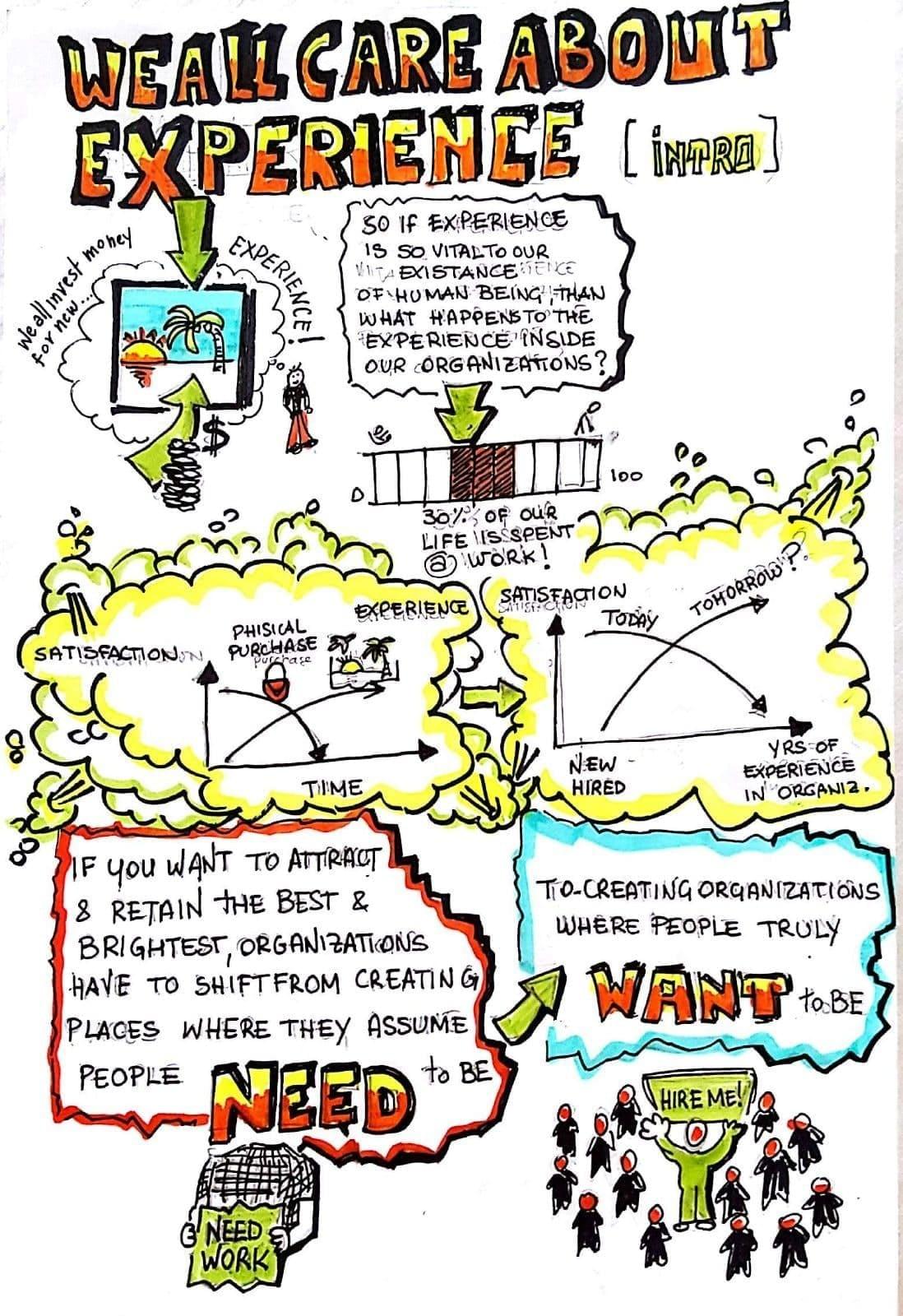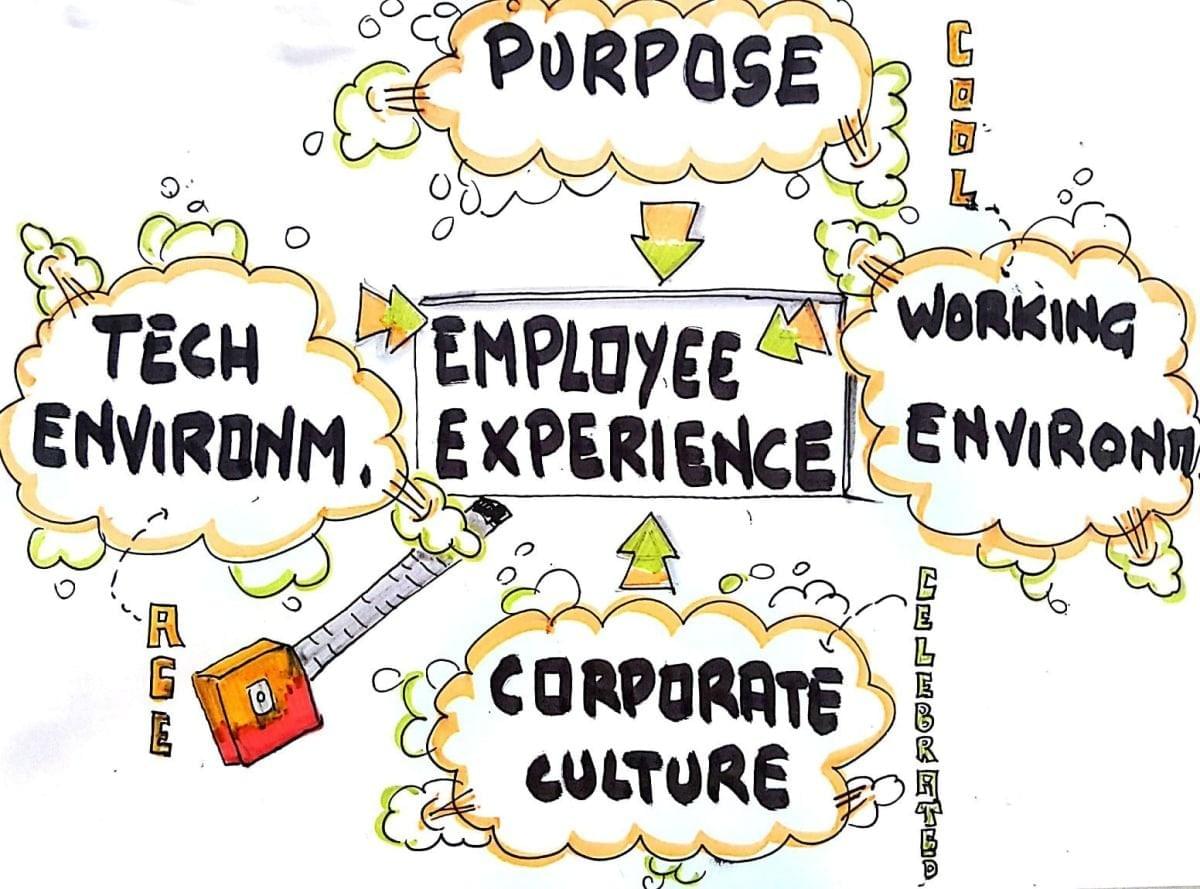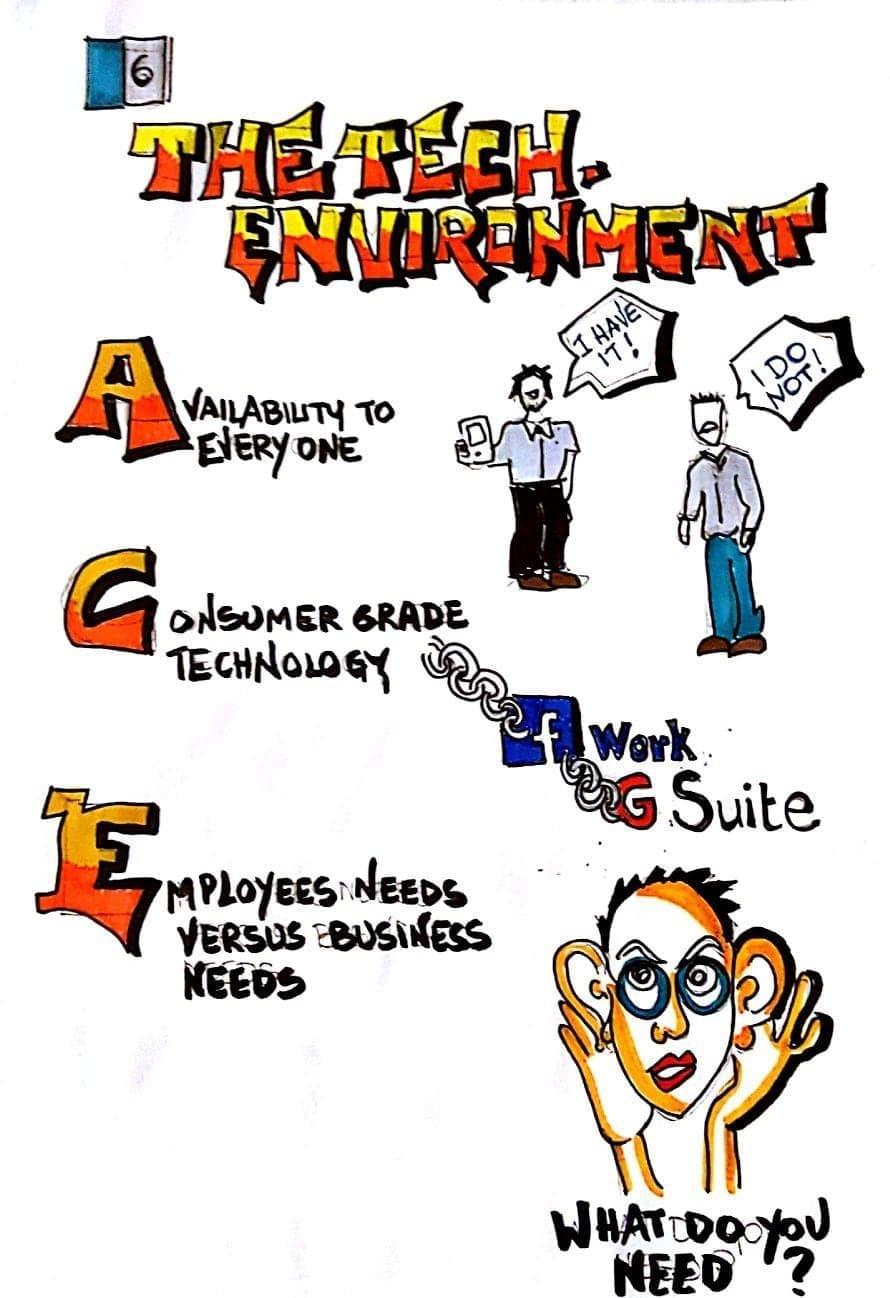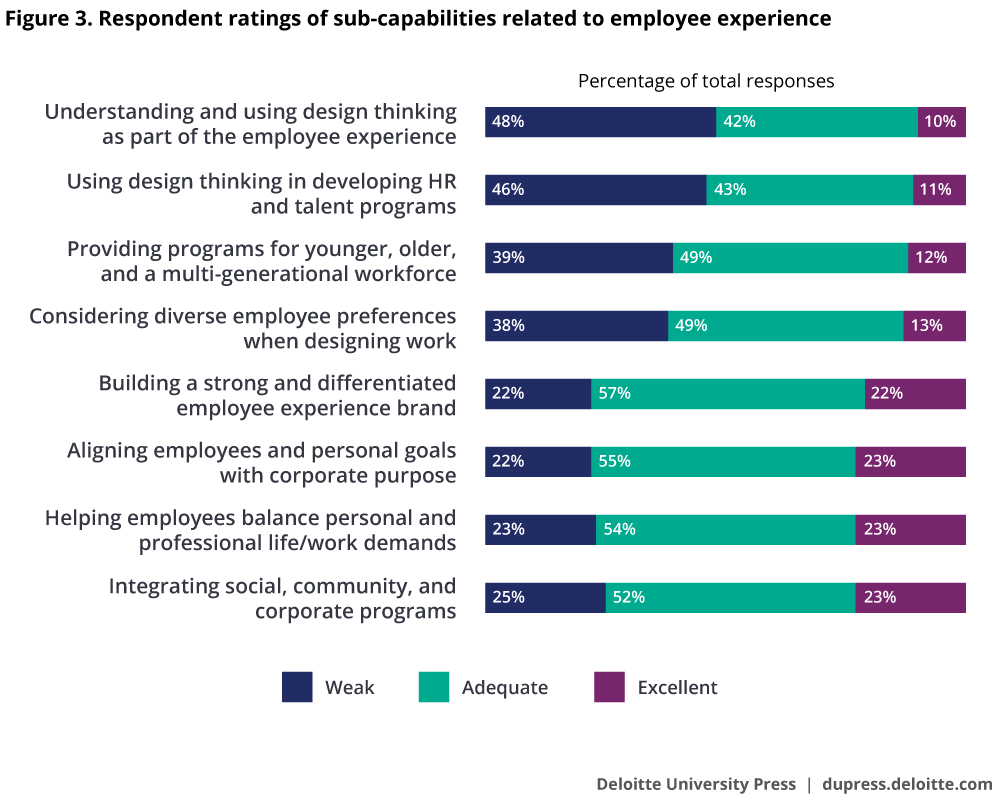As digital transforms the business environment, the successful organizations of the future will likely be those that can move faster, adapt more quickly, learn more rapidly, and embrace innovation.
The digital transformation brings a more and more unpredictable and complex environment and a dramatic shift in terms of business model and customer experience. The innovations are faster and it becomes difficult to predict how future will look like and which competencies will be needed. For this reason, the organizations struggle in preparing and developing talents for the future. This will have these major impacts:
- When the needed competencies will be clear enough we will have to act quickly and we might not have enough time to develop internally the competencies so the external war for talents will be even stronger than today
- The external customer experience will be dramatically impacted by the internal employee experience and the ability of people to design a blended approach of digital and human customer relationship
- Internally the best approach we can have at this stage is to focus on learning agility and adaptability and leadership skills adapted to manage complexity, agility, and innovation
It is clear then that the below aspects become dramatically important:
- Talent attraction, retention, and engagement through great employee experience
- Leadership and skills development strategy
EMPLOYEE EXPERIENCE
If companies want to attract, retain and engage the best (and few) talents, they have to switch from being places where people stay because they NEED to work to places where people truly WANT to work. This can happen only if the talents have a great employee experience. Over the years we notice that organizations have moved from providing:
- what the employees need in order to perform their job (basic tools and space)
- to providing the systems needed to enhance their productivity (what employees need to work better and faster),
- and to providing programs aimed to make the employee happy and engaged (actions reacting to company engagement survey).
What it is important now is to create sustainable conditions to make a lasting positive impact on the experience employees have at work in order to make them want to “show up and sign up”.
The below data also confirm the perception that the employee experience is becoming really important.

The issue is that as organizations shift to a networked, team-based structure, the employee experience becomes more important but also more complex. People today have often multiple roles with multiple managers.On top of that, unfortunately, what organizations assume to be the employee reality and what employees actually experience is often misaligned due to different perspectives.
For a short period of time, I was in connection with them also as a wife of one of their employees. In all these situations (and many others are possible), I had new interactions with the company which could reinforce or change my opinion on the company and gives me a positive or negative “experience”.
Usually, companies take care of a person “engagement” only when this person is hired, while it can happen (as in my case) that this person has more impact on the success of the organization, on other employee’s motivations or on the customers' experience under “unconventional” contractual forms of collaboration. I put in brackets the word “unconventional” because, in reality, those forms will become more and more the norm in a world where flexibility is becoming a need for the companies and a desire for the people.

Based on recent researches the most impacting elements on the employee experience are:
- Technology environment
- Working environment
- Corporate Culture
- Compelling Purpose (we have already discussed this in the previous articles)




Let’s now try to play a bit around these concepts.Take a moment and list down 3 positive memories in your employee experience happened during your career life and 3 negatives.
As we said, the way you think about your working experience is based on specific moments you have been living, isn't it? Most probably you have been thinking about your first day of work in an organization or a discussion with your manager, or what your colleague in HR (or your manager) has offered when they proposed you for a working experience abroad.
Employees do not cluster their experience by silos, processes or systems (people development, talent acquisition etc) as we do usually in HR departments, but think about their experience as you just did, by important moments in the journey

.So, how do you think is your employee experience at work in your company? Positive or negative? There is any of the important moments in this journey which might be improved?
It takes care also of the human aspects such as the willingness to change and to do real innovation. The steps are the one listed below, however, based on our experience the critical success factor is not "what" you do but "how" you do it and the alignment on the intention (the “why”).
Those are in summary the main steps:
- Ask employees which are the key moments that matter using Focus group/ Discussions/ Surveys
- Agree on which are the most critical ones
- Assign each of these moments or the entire employee journey to a cross-functional team composed of an executive sponsor,
a MHW design thinking for employee experience facilitators and a group of employees (users) - Train the cross-functional team on MHW design thinking and employee experience re-design (we emphasize this aspect because as for the Figure below the level of competence in organization about Employee Experience re-design is quite limited)
- Re-design the entire employee journey or the critical moments you have defined

Let's imagine together now how the last step (re-design the employee experience) works. When starting to re-design the employee experience moments and the journey you will apply the MHW design thinking approach, use people analytics and co-creative methodologies and you will focus on Technology, Environment, and Culture.
- First of all, make sure the team is aligned and clear on the group "intention" for this project. What do you and your colleagues in the designing team want to achieve? Is the project team aligned on expectations, do you have any assumptions you might need to be aware of?
- Based on the research of this book, you know that unfortunately different people in the organization will have different perspective on the employee experience. Remember what we draw? A 9 can be seen also as a 6 from another perspective. That is why the first pillar of design thinking is the importance of empathizing with the users (your employees) by asking and observing their experience. Plan a discovery journey and learn as much as possible from it. Interview, observe and use also the people analytics and data you have, they can be very meaningful. After collecting all these information, you can cluster the users in "Personas ", use an Empathy map and an Employee experience journey to organize the data and collect the insights.
- Usually many ideas for innovation/improvement start to emerge and you can now create more focused "How Might We questions ". The initial one was very generic ("How Might We" improve our employees experience journey?)
- Your team is ready now to brainstorm and redesign the employee experience journey.
- However, make sure that all the team is prepared for the mindset change needed for real innovation! And why not involved in the re-design also the users and gather their collective intelligence through a co-creative workshop (something like an Hackathon or a World Cafe')? Most probably you will have also considered to use some of the several new HR digital apps and solutions available in the market or considered and HR or chatbot to reply faster to the “always the same” type of questions, or you might have decided to go paperless.
- Once all the innovative ideas have been generated and evaluated based on their impact and risk, you can start to run a prototype and test it with your users.
- After a reiterative process of test, feedback, and improvement you will have your final version. Just remember to challenge again the effectiveness of it after a while and do not stay in "autopilot mode" for too long.
If you want to start to reflect more on this approach we have prepared something for you.Reflection questions:
- What type of impact you foreseen on your people strategy given to digital transformation? Specifically, how about talent attraction, retention and engagement?
- Which is today your strategy on those aspects and there is anything you should re-think?
- Take a moment and list down 3 positive memories in your employee experience happened during your career life and 3 negatives
- How do you think is your employee experience at work in your company? Positive or negative? There is any of the important moments in this journey which might be improved?
- Your HR team is used to mostly talk to employees to understand their point of view and needs or they also structurally observe people in action in their “field” and “sense” the needs empathizing with them?
- Do your company organize moments of collective intelligence and co-creation or Hackaton?
- Is your company (including HR) familiar with Design thinking?
We hope you enjoyed reading this article! Are you interested in receving our news letter? Register here. https://docs.google.com/forms/d/e/1FAIpQLScMOg4VUzaQjCIkWYTjW3IpwK7XTAPVOyh15bq30L-N2DeCNw/viewform?c=0&w=1
GIORGIA MADONNO
Managing Director at Marco Polo Consulting
Giorgia spent most of her HR career in senior positions in corporate HR in Europe, US and Asia with companies such as Fiat Group and The Nielsen Company. In 2008 she founded Marco Polo Consulting, a company specializing in Organization development/HR/Transformation professional services operating across Asia-pacific. She delivers facilitation, coaching, training, advise, OD temporary management. Recently Giorgia has been HR and Organizational Behaviors EMBA Adjunct Professor at MIP/Tongji University in China. She is a subject matter expert for Employee Experience re-design and innovation by collaborative approaches such as Design Thinking, Lego Serious play, Art of Hosting, Graphic Facilitation. She is currently based in Singapore. https://www.linkedin.com/in/giorgia-madonno-313b677/
Would you like to know more about our Employee Experience re-design Journey services? Contact us.
